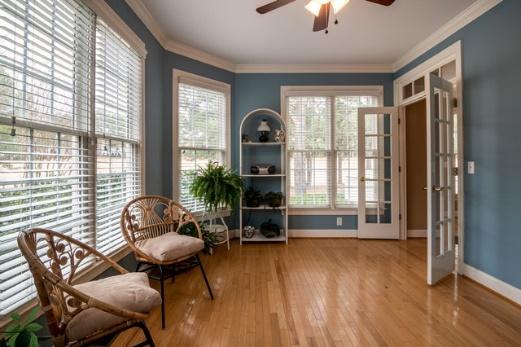In the modern world of architecture, cozy and luxurious inspirations are attributed to house construction. Radiant floor heating, also recognized as floor heating, is a home feature that is trendy in new housing. With the heated floor in your house, there is no need for traditional radiators.
If you seek to renovate your old house into a clean, comfortable, and design-led living, under-floor heating is the best way to warm your feet. You most certainly have experienced the scenario of getting out of a warm bed and stepping onto a cold floor.
Radiant floor heating systems are either electric or water-based systems. Read within the post and get to comprehend more about radiant floor heating systems.
How Radiant Heating Floors Work
Floor heating systems are installed under the floor, thus, heating your room from the bottom up. The systems circulate hot water via flexible tubing placed beneath the floor. The hot water tubing warms up the floor, and heat radiates into the entire room. When the nice, warm air rises, the air temperature ranges from about 24oC, depending on your thermostat settings.
Unlike a forced-air system, the radiant heat system warms the room and maintains the heat over a long period. The bottom-up heating heats the room evenly from the floor up. The forced air system blows the hot air into a room; thus, the air quality circulated may integrate dust and allergens, whereas the air quality is better as it entails no blowing for the radiant heating system.
Pros Associated With Radiant Floor Heating
Energy-Efficient Heating
Whether the heating system is electric or water-based, they both provide bottom-up floor heating. They offer consistent and efficient warmth. Electric systems include under-floor heating wiring compartments installed beneath the floor to generate warmth. Warm water systems run hot water via pipes underneath to create heat.
Traditional radiators are required to be heated to a high temperature for adequate room heat up. The conventional radiators need a temperature range of 65-75 degrees Celsius, whereas modern floor heating requires a temperature range of 29oC to run and keep the room warm. Thus, overall energy bills are reduced by up to 15%.
Easy Installation and Effortless to run
The heating floor system integrates warm-up heating controls, ensuring that our heating runs via either an automatic thermostat or a programmable thermostat. A programmable thermostat gives you the option to switch the system on or off.
Once installed, the radiant floor heating requires virtually no maintenance and has a 30-year guarantee.
Comfort and Safety
As much as the radiant floor systems are underneath, the heating systems are tucked out of the way and won’t get too hot to touch. More so, the air circulated is quality.
Compatibility with all Floor Coverings
Floor heating works well with laminate, wood, stone, carpet, and tile. Thus, you are free to choose the floor type to integrate within a room.
Design Freedom
Radiant floor heating does not integrate radiators on the wall. Thus, you can decorate the walls to your desire.
Conclusion
Radiant heat generates warmth from the bottom up throughout the room without any cold spots. Additionally, they entail no stuffiness in the area being heated.
Follow Home Inside for more!
